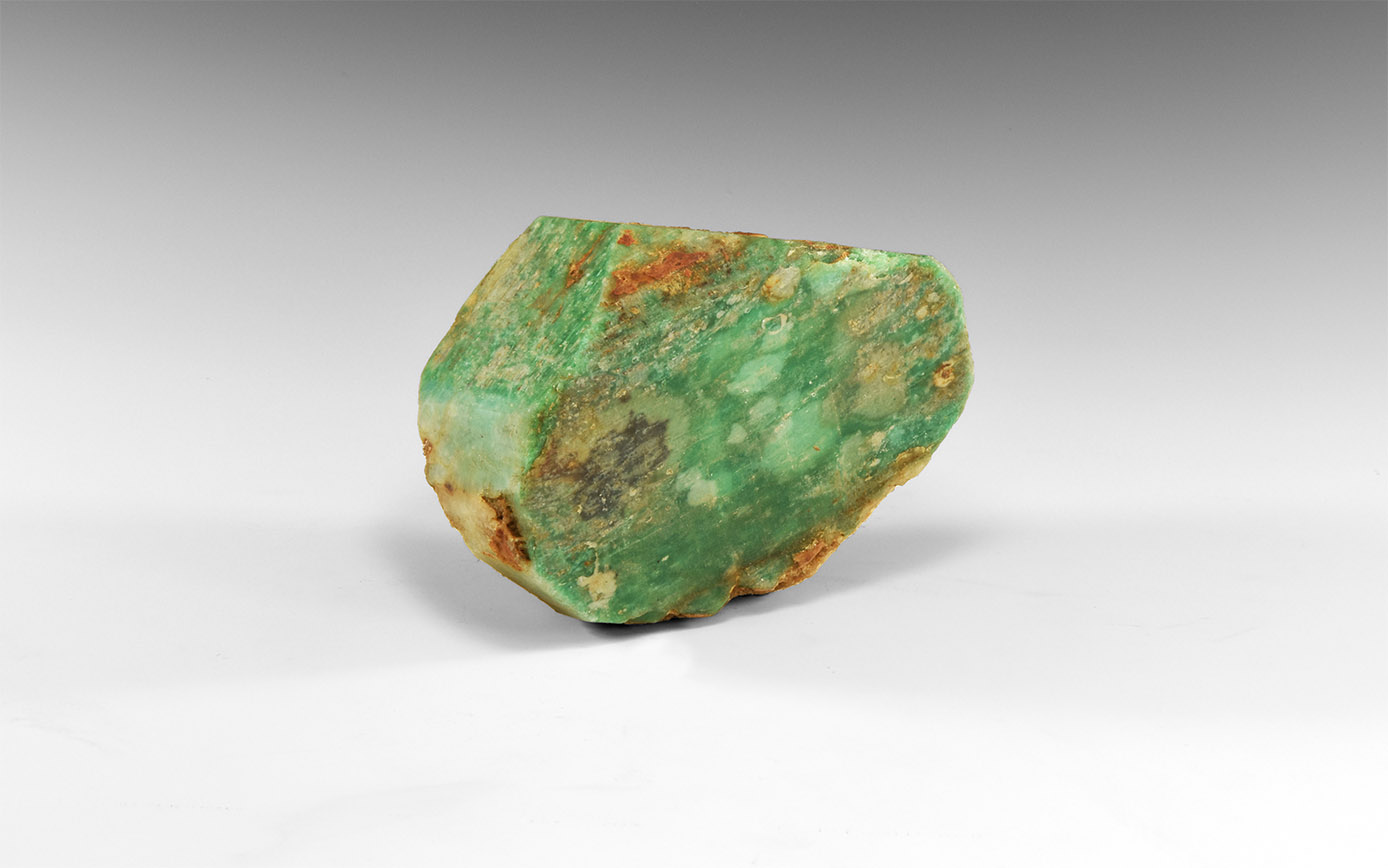NATURAL HISTORY - A LARGE GROUP OF AMMONITE FOSSILS Jurassic Period, 199-189 years BP A group of one hundred fossil ammonites, all well preserved and showing full shell details, in old white card tray; from an extinct group of marine animals similar to the nautilus, like the nautilus, ammonites had a soft body with tentacles that emerged from a hollow chambered shell utilised in the manner of a submarine's ballast tanks, Orthoceras ("straight horn") is a genus of extinct nautiloid cephalopod. 50 grams including tray, 6-11mm (1/4 - 1/2"). Extremely fine condition. [100, No Reserve] Provenance From a historic ‘Victorian Museum’ collection; from the stock of Gregory, Bottley & Lloyd (1981-2014); formerly with Gregory, Bottley & Co. (1932-1981) and previously with J. R. Gregory & Co. (1898-1932); originally in the collection of the famous James Reynolds Gregory (1858-1898). This item is part of a historic collection of fossils and minerals which has recently been reviewed by leading geological expert, Dr. Ronald Bonewitz. Footnotes James Reynolds Gregory (1832-1899) was one of the principle London mineral and fossil dealers during the second half of the 19th century. The company he founded was one of the longest surviving geological suppliers in the world, second only to Kranz of Germany. In 1858 James Gregory established his business selling polished stones, minerals and fossils from premises in King William Street. A few years later he moved to premises in Golden Square, Soho. He won prize medals at exhibitions in Paris (1867), Sydney (1879) and London (1862 and 1883). He also formed a superb collection of meteorites, which was later sold by his sons to the Natural History Museum, London. On the death of his father in 1899 Albert Gregory took over the business, dealing from premises in Kensington, then 30 Old Church Street in Chelsea. He eventually sold the company in 1932 to Percy Bottley, and after his death in 1982 the premises were sold. The company was then acquired by Brian Lloyd who had started the Natural History sales at Sotheby's before dealing from his own premises in Pall Mall. Gregory, Bottley & Lloyd, as it became known, traded from Ricket Street and later Seagrave Road in Fulham. In 2008 the business and all of the stock and Victorian cabinets were moved out of London to Walmer in Kent. On the eventual retirement of Brian and Mary Lloyd in 2014, with none of their family interested in taking over the business, the stock was sold and is now dispersed.
NATURAL HISTORY - A LARGE GROUP OF AMMONITE FOSSILS Jurassic Period, 199-189 years BP A group of one hundred fossil ammonites, all well preserved and showing full shell details, in old white card tray; from an extinct group of marine animals similar to the nautilus, like the nautilus, ammonites had a soft body with tentacles that emerged from a hollow chambered shell utilised in the manner of a submarine's ballast tanks, Orthoceras ("straight horn") is a genus of extinct nautiloid cephalopod. 50 grams including tray, 6-11mm (1/4 - 1/2"). Extremely fine condition. [100, No Reserve] Provenance From a historic ‘Victorian Museum’ collection; from the stock of Gregory, Bottley & Lloyd (1981-2014); formerly with Gregory, Bottley & Co. (1932-1981) and previously with J. R. Gregory & Co. (1898-1932); originally in the collection of the famous James Reynolds Gregory (1858-1898). This item is part of a historic collection of fossils and minerals which has recently been reviewed by leading geological expert, Dr. Ronald Bonewitz. Footnotes James Reynolds Gregory (1832-1899) was one of the principle London mineral and fossil dealers during the second half of the 19th century. The company he founded was one of the longest surviving geological suppliers in the world, second only to Kranz of Germany. In 1858 James Gregory established his business selling polished stones, minerals and fossils from premises in King William Street. A few years later he moved to premises in Golden Square, Soho. He won prize medals at exhibitions in Paris (1867), Sydney (1879) and London (1862 and 1883). He also formed a superb collection of meteorites, which was later sold by his sons to the Natural History Museum, London. On the death of his father in 1899 Albert Gregory took over the business, dealing from premises in Kensington, then 30 Old Church Street in Chelsea. He eventually sold the company in 1932 to Percy Bottley, and after his death in 1982 the premises were sold. The company was then acquired by Brian Lloyd who had started the Natural History sales at Sotheby's before dealing from his own premises in Pall Mall. Gregory, Bottley & Lloyd, as it became known, traded from Ricket Street and later Seagrave Road in Fulham. In 2008 the business and all of the stock and Victorian cabinets were moved out of London to Walmer in Kent. On the eventual retirement of Brian and Mary Lloyd in 2014, with none of their family interested in taking over the business, the stock was sold and is now dispersed.















Testen Sie LotSearch und seine Premium-Features 7 Tage - ohne Kosten!
Lassen Sie sich automatisch über neue Objekte in kommenden Auktionen benachrichtigen.
Suchauftrag anlegen